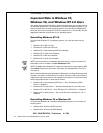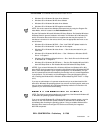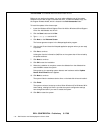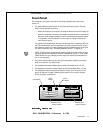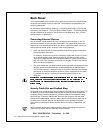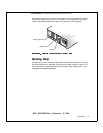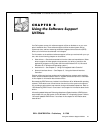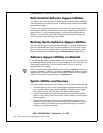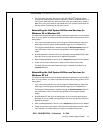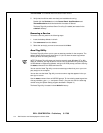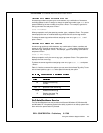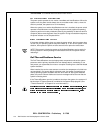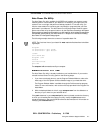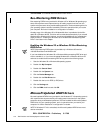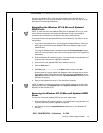
2-2 Dell Precision 210 Desktop Systems User’s Guide
DELL CONFIDENTIAL - Preliminary 8/17/98
FILE LOCATION:
S:\SYSTEMS\Aftershock\UG\9371D\9371dc20.fm
'HOO,QVWDOO HG6RIWZDUH6XSSRUW8W LOL WLHV
The system utilities, services, and bus-mastering EIDE drivers are already installed on
your hard-disk drive in two different forms: as working utilities, operative immediately,
and as diskette images.
In case you later need to reinstall the files for any reason, you need to copy the dis-
kette images to a backup diskette (see the next section, “Backing Up the Software
Support Utilities”). From the backup diskette, you can install the desired file(s) to a
directory on your hard-disk drive. Further instructions for installing the utilities, ser-
vices, and drivers are provided later in this chapter.
%DFNLQJ8SWKH6RIWZDUH6XSSRUW8WLOLWLHV
Dell recommends that you create original diskette copies, or
program diskette sets
, of
your Dell-installed software. You will need these diskettes if you ever want to recon-
figure or reinstall your Dell-installed software. To create program diskettes, use the
Program Diskette Maker (available through the Dell Accessories program folder).
6RIWZDUH6XSSRUW8WLOLWLHVRQ'LVNHWWH
If you received Dell software support diskettes, the Dell system utilities, services, and
bus-mastering EIDE drivers are provided on these diskettes. To use a utility, service,
or bus-mastering EIDE driver, you must install the utility, service, or driver as
described later in this chapter.
NOTE: On each software support diskette set you receive, a
release.txt
file may be
included (on diskette 1 of the set). If included, the
release.txt
fil
e
contains the latest
updates to the information in this guide. Use
the editor included with your operating
system to view and/or print the contents of the
release.txt
file.
6\VWHP8WLOLWLHVDQG6HUYLFHV
The following utilities and services are included on your Dell system utilities diskette:
The
Asset Tag
utility
lets you enter a system asset tag number and an owner tag
into nonvolatile random-access memory (NVRAM). Thereafter, you can display
this number using the Asset Tag utility or the System Setup program.
The
Dell AutoShutdown
service provides Windows 95, Windows 98, and Win-
dows NT 4.0 the ability to perform an orderly system shutdown when the power
button is pressed.
The
Dell ThermalShutdown
service provides Windows 95, Windows 98, and
Windows NT 4.0 the ability to perform an orderly system shutdown in the event
of a thermal failure. This feature prevents permanent damage to your system
caused by a component overheating.



